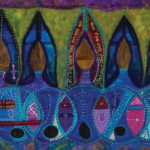My students dont have TVs
 CBC News wants to attract younger viewers with its recent relaunch, but as Carleton broadcast journalist instructor Marilyn Mercer found out, many of her students don’t have TVs or cable subscriptions.
CBC News wants to attract younger viewers with its recent relaunch, but as Carleton broadcast journalist instructor Marilyn Mercer found out, many of her students don’t have TVs or cable subscriptions.
CBC News wants to attract younger viewers with its recent relaunch, but as Carleton broadcast journalist instructor Marilyn Mercer found out, many of her students don’t have TVs or cable subscriptions.
One thing that my third-year television j-school students at Carleton University don’t ask about is the new “look” at CBC.
I began this course assigning weekly analysis of the flagship nightly newscasts at CTV and CBC. At first, some students panicked. “I don’t have cable,” said one. “Nor TV,” said another. Knowing this was about marks, they went online to cbc.ca or ctv.ca and started watching stories that often begin with Peter or Lloyd.
Each week a couple of them gave their show-and-tell analysis. This sparked debate on journalistic policy like independence, balance over time, and what ethical dilemmas newsrooms face.We watched a tenth anniversary story on the Columbine school massacre and debated whether CTV replaying archival footage of the teen killers mugging for their own camera was serviceable journalism for a Canadian audience. For any audience.
My students’ analysis assignments ended just prior to the CBC News Network (formerly Newsworld) branding launch. They appreciate the usefulness of visual broadcasting especially on the Internet and I asked them at the end of last week what they thought of the new look of CBC NN.
 None of them had yet watched CBC NN, but said they’d heard about “how people don’t like it.” My teaching assistants commented on how the new blue tones look like those of an opening computer. One found the new graphics tougher to discern but generally likes the new style. I do too. I figure the CBC meteorologists have been coaching the news anchors in a sort of line-dancing demo on how to stand and move around a bit because they’ve been doing this in front of maps for years.
None of them had yet watched CBC NN, but said they’d heard about “how people don’t like it.” My teaching assistants commented on how the new blue tones look like those of an opening computer. One found the new graphics tougher to discern but generally likes the new style. I do too. I figure the CBC meteorologists have been coaching the news anchors in a sort of line-dancing demo on how to stand and move around a bit because they’ve been doing this in front of maps for years.
I like the greater sense of activity on set. It reflects a busy multimedia newsroom. As time passes, some of the initial problems like over-lighting are being adjusted. If journalism is an art, as journalism professor G. Stuart Adam has effectively argued, then CBC NN has created an interesting multimedia “gallery” with some new “curation.” But dueling tastes in set design really misses the point that some of the works have been problematic and need grounding in journalistic principle.
As a former producer and manager at CBC, I answered myriad letters from audience members accusing the public broadcaster of lacking independence. And as I try to demonstrate for my students what’s at stake when their work lacks independence, I’m finding examples on CBC for illustration, some subtler than others.
“Our” troops or “our” armed forces is something I’m hearing some CBC journalists say, for example. Rather than “Canada’s” troops. It becomes difficult to report independently on the Canadian military when its footage is used extensively, albeit labeled accurately. This was the case in September when a CBC foreign correspondent narrated a piece, shot in Cyprus. This isn’t about reporters having so little time that they need the military to shoot their stories. This is about references that conflict with journalistic policy standards written by the CBC itself to serve viewers in a democracy. My students looked confused when I first told them to use the third person when referring to military, but who can blame them when CNN and Fox News slip into using “our” troops, and when the CBC occasionally does too?
CBC’s The National can probably forget about getting my class demographic, even if they are j-school students. This generation wears the news in their clothing and won’t make an appointment to view it late in the evening. They monitor their hand-held devices throughout the day often after texts from friends to check out something, on YouTube, or cbc.ca like the boy in the balloon. This story “broke” during my Thursday class. One of my students said last week that this coverage made him madder than any he’s seen in a long time because it lied rather than reported, manipulated rather than explained. But it provided another good teaching opportunity on why reporters need to be independent of police, not just on a single story, but on the general theme of crime.
One of the changes I’ve noticed on local CBC TV during the last year is the emphasis on crime stories. It may be a quick way to get viewers’ attention and grab ratings, but it distorts community portrayal. It also distracts journalists from their essential role to monitor centers of power like police, overbearing members of a family, or government-run clinics.
CBC News’ new look was revealed on Monday Oct. 26 when many in the country needed clearer advice on the efficacy of H1N1 flu vaccine, as science journalism instructor Peter Calamai notes. This crisis and the launch of a new CBC NN brand coincided in such a way that may not have been conducive to best practices in medical or health journalism on CBC. One wonders what auditor general Sheila Fraser might have added on the role of public broadcasting, to her report of Public Safety Ministry shortcomings, if her office had looked at the H1N1 flu outbreak in Canada.
CBC has been analyzing, on air, its own coverage of the pandemic, which is another opportunity for students to learn about media accountability in their reporting. But if a real emergency strikes the country, let’s hope that all those meteorologists on CBC News Network’s staff know how to report more than the weather.
One of my student teams rushed back to class with a story on a line-up for H1N1 vaccine Oct. 29. My critique was that it was yesterday’s heavily reported news, until I turned on The National that evening and saw that it was essentially repeating its previous night’s story on people waiting for needles at public health clinics. My students didn’t re-argue their case on the news worthiness of their piece. They could have, if they’d been in the habit of watching The National for reasons other than grades.
(Image by autowitch. Used under Creative Commons license.)
[node:ad]



